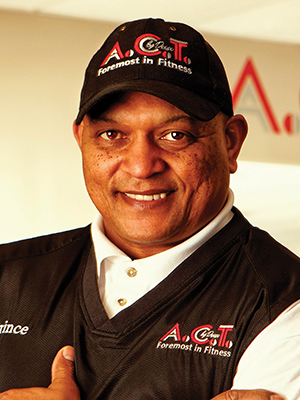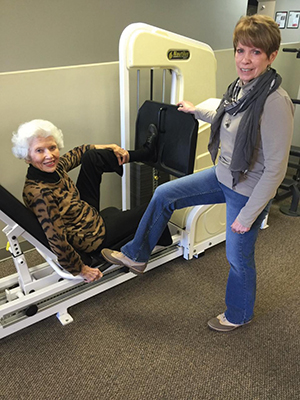 Prince Deese
Prince DeesePrince Deese, an All American Wrestler, a Hall of Fame Football Player, and a State Champion Body Builder, is a certified personal trainer and strength conditioning specialist. Prince Deese and Gina Deese own A.C.T. by Deese, a Fitness & Training Center in Greensboro, NC.
Exercise, following hip replacement, is a primary key toward a positive post-surgery result. Early exercises help increase circulation to the feet and legs, prevent blood clots, and help reduce pain. But the questions remain: Which exercises are best? How often and how long should I work out? How do I know at what level to increase activity?
The American Academy of Orthopedic Surgeons provides a simplified “do and don’t” list but there are few restrictions with the direct anterior approach. Patients often hire a physical therapist in their home or register for programs at specialized rehabilitation hospitals and skilled nursing facilities.
Hip replacement patients in Greensboro have another choice. A.C.T. by Deese, a fitness facility with trained personnel, works closely with physicians and families to insure a successful outcome of a personalized program in a comfortable setting.
 Bonnie Pope, standing, and Trudy Atkins both endorse exercising following the new anterior hip replacement surgery.
Bonnie Pope, standing, and Trudy Atkins both endorse exercising following the new anterior hip replacement surgery.One recent patient, Bonnie Pope, age 68, had hip pain for eight years. When physical therapy was insufficient to alleviate the pain, Bonnie elected to have a hip replacement. “I wish I had had the surgery sooner,” she says. “The pain level of surgery was very little and the pain in the recovery process was not unbearable.” Bonnie’s surgeon, Dr. Frank Alusio, told her not to stop exercising. After just eight weeks of re-hab, Bonnie rejoined her morning fitness class, enjoying cardio, strength, balance, and her group friends, pain free.
Trudy Atkins had a similar experience after suffering hip pain for six months. A longtime ballroom dancer, she consulted a friend, Lynette Smitherman, who had had a recent hip replacement and was back on the dance floor within several weeks. Lynette recommended a new procedure, a direct anterior approach, and a Greensboro surgeon, Dr. Christopher Blackman, who was experienced in performing it.
“The early morning surgery was uneventful,” Trudy says. “Several hours later, a hospital therapist had me walking,” Two days later, discharged to Camden Place for serious therapy. “I had exceptional therapy two and three times a day. Returning home, I did not need a home therapist nor a walker nor a cane nor any other device to aid in recovery, but I did return to A.C.T. for exercise, essential to my full recovery.”

